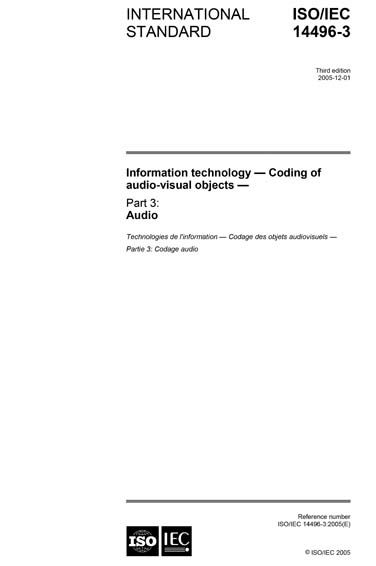Historical
ISO/IEC 14496-3:2005
Information technology - Coding of audio-visual objects - Part 3: Audio
ISO/IEC 14496-3:2005 (MPEG-4 Audio) is a new kind of audio International Standard that integrates many different types of audio coding: natural sound with synthetic sound, low bitrate delivery with high-quality delivery, speech with music, complex soundtracks with simple ones, and traditional content with interactive and virtual-reality content. By standardizing individually sophisticated coding tools as well as a novel, flexible framework for audio synchronization, mixing and downloaded post-production, the developers of the MPEG-4 Audio International Standard have created new technology for a new, interactive world of digital audio.
MPEG-4, unlike previous audio standards created by ISO/IEC and other groups, does not target a single application such as real-time telephony or high-quality audio compression. Rather, MPEG-4 Audio is a standard that applies to every application requiring the use of advanced sound compression, synthesis, manipulation or playback. The subparts that follow specify the state-of-the-art coding tools in several domains; however, ISO/IEC 14496-3:2005 is more than just the sum of its parts. As the tools described here are integrated with the rest of the MPEG-4 International Standard, exciting new possibilities for object-based audio coding, interactive presentation, dynamic soundtracks, and other sorts of new media are enabled.
Since a single set of tools is used to cover the needs of a broad range of applications, interoperability is a natural feature of systems that depend on the MPEG-4 Audio International Standard.
Content Provider
International Organization for Standardization [iso]






